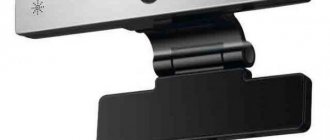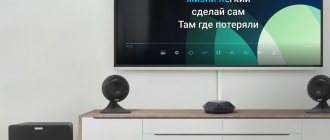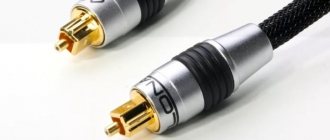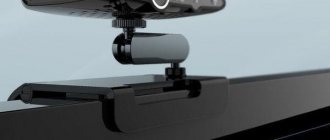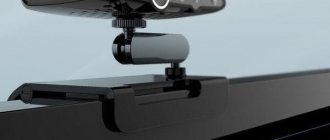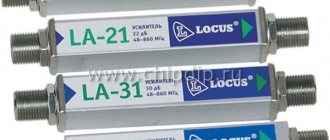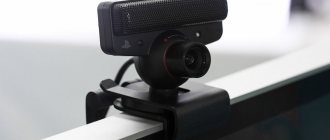After the huge wave of popularity that the first virtual reality headsets for phones gained, ]Samsung[/anchor] also created its own device. She decided not to reinvent the wheel, and followed in the footsteps of those already traversed. Together with Oculus VR, she created her own version of a virtual reality helmet, which was called Samsung Gear VR. Despite the fact that many users do not know how to use Gear VR, it is not difficult at all
The first versions of the device appeared back in 2014. The gadget weighs about 300 grams. Due to the fact that Samsung Gear 360 is intended for use with Samsung flagships, virtual reality glasses use the built-in sensors of smartphones, but they also have their own “gadgets”, for example, a head rotation and tilt sensor.
The helmet body has its own “controls” - a volume rocker, a back button and even a touch panel. The latter is necessary for navigation in the structure of Oculus shells, as well as for better control in various virtual reality arcades.
Principle of 3D technology
In order for the image to become three-dimensional on the TV screen, it is necessary to feed frames to each eye of a person separately. For this purpose, they use special 3D glasses for TV, which can be purchased for viewing. The operating principle of the technology is based on closing each eye in turn in a timely manner, creating a 3D effect. This is a feature of active 3D technology.
There is also a second method, when the built-in lens will divide the image on the screen into several types. The left eye will perceive some frames, the right – completely different ones.
To watch 3D movies on the screen, you definitely need to buy high-quality 3D glasses for Samsung (or other popular brands).
In modern stores there are several options for equipment, the operating principle of which is based on the use of this technology - active and passive.
To find out which technology a specific type of TV supports, you can use three main methods:
- Read the instructions that came with the TV.
- Study the information on the official website of the digital equipment manufacturer.
- Ask a consultant when purchasing glasses for 3D TVs.
What is virtual reality
In technical terms, the term virtual reality refers to an artificially created world, broadcast or transmitted to the user through his sensations (primarily visual and auditory perception, less often tactile sensations). Actions taking place in VR are synchronized with certain actions and movements performed by a person in the real world. For example, head tilt in reality is also reproduced in VR.
There is no single VR world, at least not at the moment. Each version of it is a separate computer program, game. In order to be inside virtual reality, you need special VR glasses or a helmet.
What are VR glasses for?
You can see virtual reality without special glasses, but the effect of presence will not arise. Glasses are needed to “deceive” the human brain, to create a three-dimensional picture from a flat image, synchronized with a person’s actions in the real world.
Passive technology
Passive 3D glasses for Lg (and other brands of TV devices) are called polarized. They have a very simple operating principle. Each lens is a different color and allows different frames to pass through to each eye. To operate the system, you do not need to use an additional power source. A distinctive feature is their light weight. Also, some experts classify anaglyph 3D devices as such technology.
The main advantages of such equipment include low cost and reduced eye strain.
Using a 3D device, you can watch movies in three-dimensional images and at the same time enjoy comfort. But there is also a drawback. Many users write in their reviews about the worse image quality when compared with the active picture delivery system.
Before purchasing 3D glasses, be sure to study the instructions for connecting to a TV - in the compatibility column you can select the appropriate options for a specific TV device. The range of use does not exceed 6 meters.
Passive technologies are divided into several types:
- Using straight lenses. The image will be distorted and this is the main disadvantage of the system. If you have to buy such models, the viewer should sit directly in front of the monitor and not move his head.
- The glass is made in the shape of a semicircle. This type of viewing is more convenient, since the picture will not be distorted when moving your head.
When purchasing, it is advisable to use the second option, since comfort is important when watching a 3D movie.
Top games and programs
We have created a small selection of the most interesting applications for different categories of VR glasses. It includes not only games, but also several programs. The range of available applications is increasing and you are unlikely to get bored with a VR headset.
On a smartphone
- AAA VR Cinema (media player)
- Trinus VR (streaming app)
- Vrse - Virtual Reality (360 video)
- Sisters
- Dive City Rollercoaster
To the console
- Robinson: The Journey
- Star Trek: Bridge Crew
- The London Heist
- Wayward Sky
- VR Worlds
On PC
- Elite – Dangerous
- Subnautica
- ADR1FT
- Assetto Corsa VR
- Eve – Valkyrie
Active technologies
Active technology is also called shutter technology. First of all, you need to understand that these glasses are powered by a separate battery (included), which must be charged periodically. There are also options where you need to change the battery.
The battery will last approximately 70 hours, and the charging time will be 3 hours. The battery will last for 120 hours of use. Active 3D glasses have an on/off button. By looking at the icon on the side, you can immediately determine at what point they need to be charged or replaced with a battery.
An infrared sensor is used to connect the glasses to the TV. Thanks to this technology, TV with 3D effect can be watched even at a distance of up to 12 m.
The advantages of using this equipment include high image quality, which far exceeds passive technologies. Before purchasing 3D glasses, it is advisable to read the instructions to find out about the compatibility of the device with your TV.
To avoid problems, in the store you need to look for 3D glasses of the same model as the TV.
The disadvantages include the high cost of the technology, which is 2 times higher than the price of passive models. There is also increased strain on the eyes. The lenses will constantly work, opening and closing the image.
It is not recommended to watch 3D films that last more than 4 hours. Users also note that image quality will deteriorate when turning the head. This means that you need to watch TV in an almost motionless position.
Connection to smartphones from other manufacturers
As you know, Gear VR virtual reality glasses were developed specifically for the Galaxy line of phones, and they are simply not compatible with smartphones from other manufacturers. At least physically, because not all phones can be inserted into glasses.
However, many users who set up and launch Samsung Gear VR note that they want to access other virtual reality applications, such as Google Cardboard and others, but they cannot. This is not strange, because they are not included in the Oculus store products. But this problem is solved as follows:
- Disables the Oculus process, which starts automatically when the phone is installed in the helmet. You can do this using paid applications, such as Package Disable Pro.
- The program starts and Oculus services are disabled (there are three in total).
- Gear VR turns into an ordinary Google Cardboard, which uses all the content for virtual reality glasses located in the Play Market.
If the user wants to switch back to Samsung Gear VR mode, nothing will stop him - just resume previous processes.
Popular 3D glasses manufacturers
In stores you can find many different devices for watching 3D movies. Among all the variety, it is worth paying attention to only a few brands. Manufacturers have long confirmed the reliability of their products.
Budget options:
- Epson;
- Palmexx;
- LG;
- Philips.
Mid-priced glasses:
- Optoma;
- Sony.
Premium class:
- J.V.C.
What is Samsung VR?
The Samsung VR app gives you free access to your own VR video portal with a huge and constantly growing VR library. All videos are conveniently distributed across channels, which will allow you not to waste time searching, but to immediately surround yourself with content to your taste.
For greater convenience, install the 2D version
Install the version for use with Gear VR
How to connect and watch a movie
1. To connect the TV and glasses designed using an active system, you need to press the power button and point the 3D equipment directly at the monitor. Next, automatic setup and pairing of equipment will begin.
In order for the device to work without failures, you need to worry about the compatibility of the two devices in advance. They can work with all popular modern TV models - Panasonic, Philips, Samsung and others.
2. If passive types are used, then simply put them on and press the button to turn on the desired mode on the remote control. There is no need to configure or activate the equipment. It is not recommended to watch 3D TV without glasses. If you activate the function without special equipment, the picture on the screen will turn out blurry. 3D glasses for TV are an interesting device that expands the capabilities of a TV device for watching movies. Using them, you can fully immerse yourself in the session and appreciate the modern capabilities of 3D.
3D Clarity 400 for immersive Full HD 3D viewing: Video
Many people ask the question: Are there universal active 3D glasses that will work with different TV models? Several companies have announced the start of joint cooperation in the development of universal active 3D glasses. These include the following brands:
- Samsung Electronics;
- Panasonic Corporation;
- Sony Corporation;
- X6D Limited (owner of the XPAND 3D trademark).
The union of these companies began its work back in 2011, and already in 2012 the first universal shutter 3D glasses
. However, you need to understand that they can only work with TVs of the above brands. Of course, it is quite possible that in the future full-fledged universal models of active 3D glasses will appear on the markets. However, at the moment there are no such ones, and users have to be content with what they have.
Makes a clicking sound and won't turn on. It is known that LCD TVs
series
have problems with capacitor failure. If your Samsung LCD TV won't turn on or makes a repeated clicking noise, you can save hundreds of dollars by performing this simple repair yourself.
I know I know. You're thinking, "Tinker's on my LCD HDTV. Are you crazy? No, I'm not crazy. This is a renovation that almost anyone can do.
No Samsung? The following steps will also work for you
Read on...
You sit down and get comfortable, getting ready to watch your favorite TV show or movie. You turn on the TV and... nothing! Not sure if you press the power button you'll try again...again, nothing! But you notice a clicking sound coming from your TV.
"What the hell? No... That's crap!
HDTVs aren't cheap. Most of us need to save, or at least be willing to spend $800 to $1,000 on a new one. Heck, I'm sure many of you don't like the idea of spending several hundred dollars on a renovation. Well, I've got bad news and good news.
The bad news is that you are the proud owner of a Samsung LCD HDTV that has a known problem with capacitors failing after 2-3 years, and if you didn't purchase an extended warranty, you could be out $200. — The repair bill is $400.
The good news is that this repair is actually quite simple, and with just a few basic tools and about $20, you can have your TV working in less than an hour.
The step-by-step repair below was performed on my 46-inch Samsung LN46A550 LCD HDTV, but this is a problem with any Samsung TV.
No Samsung? Either way, read on, this guide will help you with any brand of LCD as bad capacitors are very common in modern electronics.
For this repair you will need the 5 items below:
- Soldering iron and solder
- Phillips screwdriver
- Pliers
- Wire cutters
- Samsung repair kit.
Note: You will determine which capacitors you need in STEP #5
Need a soldering iron? No problem. They are cheap and easy to use.
I highly recommend the J&L 60W Soldering Iron. It's about 20 bucks..
If you're looking for the lowest price possible, this 60W soldering iron with stand costs around $8 (comes standard) and will do the job.
Get replacement capacitors now for speedy repairs.
Do you have everything you need? Time to dig in!
These tools are not required, but they can make the process easier.
- Magnetic, flexible, ratcheting screwdriver (for removing all case screws)
- Electric screwdriver (to remove all case screws)
- Desoldering wick (absorbs melted solder)
- Solder suction cup (remove melted solder)
- Flux Pen (the flux on the solder makes it flowable and less “sticky”)
- Multi-Meter (test for bad caps, useful if there are no visual clues)
Once you have unplugged everything from the TV, you will need to remove the stand. If your TV was wall mounted, you will need to remove the TV from the wall and remove the mounting bracket from the back of the TV.
Red arrows: Remove these 4 screws to remove the stand from the TV.
Blue arrows: Remove these 4 screws to remove the wall mount (not shown) from the TV.
The TV is on top and inside the stand so it won't tip over when you unscrew the stand screws, but it's always safer to have a friend hold the TV upright while you unscrew the screws from the stand. Then each of you will grab a side and gently place it on the carpeted floor. .
Warning:
When carrying the TV, always hold it vertically (as when viewing) or horizontally. Any force applied at the wrong angle can damage the fragile glass façade.
The area we will be working on is indicated. See "Step 3" for enlargement.
Remove the 7 different wire harnesses located on the PCB. Simply pull the connector clip (not the wiring) to remove them.
Remove the 6 screws shown in the picture above and remove the PCB from the TV chassis. This board is a power supply board and is not particularly sensitive, but it is always a good idea to hold these boards carefully and by the edges.
Identifying faulty capacitors
Usually, but not always, capacitors show visible signs of failure. There are two main types of visible failures.
Ventilation holes:
When it fails, a chemical reaction inside the capacitor can produce hydrogen, which is why the caps on aluminum can capacitors have holes in them to break down and release the gas that has accumulated inside the capacitor. Thus, a failed capacitor may have a bulge at the top. Below is an example.
A leak:
Another sign of a capacitor malfunction is fluid (electrolyte) leakage. This may be an orange or brownish discharge on the top or bottom of the capacitor. Typically, when there is a leak, the capacitor will also swell. But the capacitor can swell, but not leak.
Once again, we want to emphasize that capacitors do not always show visible signs of failure. But if you see signs of this on your board, you can be sure that you are ready to fix your TV. If you don't see these signs of trouble, but your TV has had a clicking sound, you can still rest assured that the steps below will fix your TV.
If you have a Samsung 550 series LCD (and possibly other models) and you've come to this site because your TV won't start and is making a clicking sound, then the picture above shows the capacitors that should be replaced in the red box .If you have a different make or model, you will need to visually inspect and replace damaged capacitors.
Below are close up photos of my TV board. Notice how the blue capacitors in the foreground bulge. These are the capacitors that I will replace. All other capacitors look fine. If you can find replacements for all 4 of these capacitors and any others that are showing visual signs of failure, I recommend replacing them all while you're here.
I couldn't find dedicated replacements for the "black" capacitors (820uF, 25V) at my local electronics store, and since they looked ok, I just replaced the bulbous ones. But again, if you can find replacements, and since capacitors are cheap , replace all 4 of them if possible (and any others that show signs of damage) while you're at it.
Step 6: Remove Capacitors
Capacitors have polarity. This means that, like a battery, they have a positive (+) and negative (-) side. Before removing the capacitor, note which side the white capacitor strip is facing. You will need to insert the new capacitor in the same direction. You may have noticed in my photos that I marked the aluminum heatsink with a pen.
Now that you have identified the capacitors that look bad, turn the board over and carefully identify exactly where on the board the wires from those capacitors lead. Trace them with a marker pen to help you keep track.
Grab a friend and ask him to help you with the next step. Balancing a PCB on its side using a hot soldering iron and pliers can be a little tricky.
Plug in the soldering iron and give it 10 minutes to heat up.
Place the PCB on the edge, have a friend grab one of the capacitors with pliers and very gently press down on it. Place the tip of the soldering iron on one pin on the back of the board and hold it there until you see the solder melt. Now switch to the other wire until it melts. Continue moving back and forth across the leads. The solder will melt faster each time. After going back and forth a couple of times, the capacitor will come out easily.
Repeat these steps for each capacitor you replace.
Let the iron do its job. If the capacitor does not come out easily, do not force it.
Step 7: Get the appropriate repair kit from Amazon.
Now that you have identified the faulty capacitors. You need to go out and find a replacement. The easiest way is to purchase a kit from Amazon.
If you want to hit the road on your own, keep the information below handy when choosing replacement capacitors.
Capacitors
are designed for their application, and you must replace similar ones with similar ones. It is necessary to determine 3 ratings:
1. µF (microfarads)
2. Temperature
3. Voltage
µF (microfarads)
Ideally, you should precisely match the uF and the nominal temperature. But it is acceptable to use a capacitor with a rating higher than µF if it is within 20% of the original.
Temperature
Try to match the temperature rating, maybe higher but not lower.
Voltage
There is some wiggle room with the voltage, but only if you increase it. Do not replace a capacitor with a lower voltage rating than the one that was removed.
You can often find replacement capacitors at your local electronics store. But it may be easier to buy a replacement from Amazon.com.
For Samsung LN46550A you will need
1000uF, 10V, 105c capacitor, high temperature, radial leads or
820uF 25V capacitor 105c high temperature, radial leads.
For my repair I couldn't find a 1000uF, 105 degree and 10 volt capacitor, so I replaced it with a 1000uF, 105 degree and 16 volt . I have seen this repair succeed with a capacitor up to 25 volts, but I wouldn't began to rise above this.
Insert the capacitor, making sure the negative side is installed in the correct location. If there is hard solder in the hole, simply use the soldering iron until the solder melts and the contact capacitor goes in.
Bend the wires back to hold the capacitor in place.
Carefully secure the wires so that only about 1/8 inch protrudes.
Place the soldering iron and solder on the lead until the heat melts the solder. Once the solder is melted on the lead, apply an iron to the lead and solder several times until the solder is completely melted on the lead. If you have flux, the connection will be clean.
Capacitors installed. If there is flux or solder residue, simply wipe the area with a damp cloth.
1. Attach the circuit board with six screws.
2. Connect all seven wire harnesses.
3. Install the back cover.
4. Turn on the TV and be happy that you'll save a ton of money.
This fix works. It worked for me, and it worked for hundreds of people reading this article. Check out the comments below!
.On a flat screen TV
